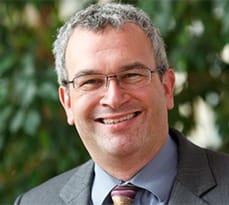In the UK and many other countries, energy use in buildings is the single largest source of greenhouse gas emissions, so a study co-authored by Dr David Reiner of Cambridge Judge develops a new model to forecast residential building stock.

The size of building stock and amount of building floor area are among the most critical determinants in assessing energy use and carbon impact in buildings. But official statistics on urban residential building stock is often piecemeal at best, so forecasts of future emissions can be highly uncertain.
Addressing this issue, a study co-authored by David Reiner of Cambridge Judge Business School and colleagues at the Energy Policy Research Group and the Engineering Department at the University of Cambridge develops a new model to estimate building stock that can help policymakers assess progress in meeting climate-change targets.
The study published in the journal Applied Energy focuses on building stock in China, whose share of global building energy consumption increased from 13% in 2010 to 16% in 2018, and where the floor area of new buildings in 2018 amounted to 34% of all new buildings around the world.
Yet official records on total floor area of China’s residential building exist only up to 2006, so trajectories of building stock from 2007 onward have been largely guesswork.
The study develops a new model to forecast future trajectories of residential stock development through 2100: the model suggests that the total stock in China will peak around 2065 at between 42.4 and 50.1 billion square metres before declining as a result of projected decrease in total population and a decelerating increase in urbanisation and per-capita floor area. This translates to annual new building of around 1.5 billion square metres for the next two decades (similar to recent historic levels), then slowly decreasing to one billion square metres by 2100.
The authors say their “first-of-a-kind analysis” is well-suited to carry out studies of energy and carbon impacts across the entire building stock, and while the study focused on China “the generality and flexibility of the modelling approach suggests its wider applicability” in various contexts around the world.
“The lack of authoritative data for something as basic as residential building stock creates a barrier for policymakers in forecasting energy use and related carbon impacts, so we hope this new model will provide a tool for a range of forecasting in situations where firm data is hard to come by,” says co-author Dr David Reiner, University Senior Lecturer in Technology Policy at Cambridge Judge Business School and Assistant Director of the Energy Policy Research Group at the University of Cambridge.
The study uses a “Bayesian Model Averaging” approach in which pre-existing beliefs are updated using data that provides “posterior” beliefs for drawing inferences that help policymakers make decisions. Specifically, five different approaches to modelling stock turnover are explored, which allows a forecast of not only total building stock but also more granular predictions of age-specific building substocks, annual new construction and annual demolition.
Local and national decision-makers need to assess the impacts of plans for construction, renovation and demolition. “The model’s ability to explicitly track the aging process of substocks and fully represent probability distributions at both the stock and substock level is critical to analysing policy trade-offs facing Chinese residential buildings” in relation to energy consumption and CO2 emissions, the study says.
The study – entitled “Forecasting urban residential stock turnover dynamics using system dynamics and Bayesian model averaging” – is co-authored by Wei Zhou of the Department of Engineering at the University of Cambridge; Eoghan O’Neill of the Faculty of Economics at the University of Cambridge; Alice Moncaster of the Department of Engineering at the University of Cambridge and the School of Engineering and Innovation at the Open University; David Reiner of Cambridge Judge Business School; and Peter Guthrie of the Department of Engineering at the University of Cambridge.


